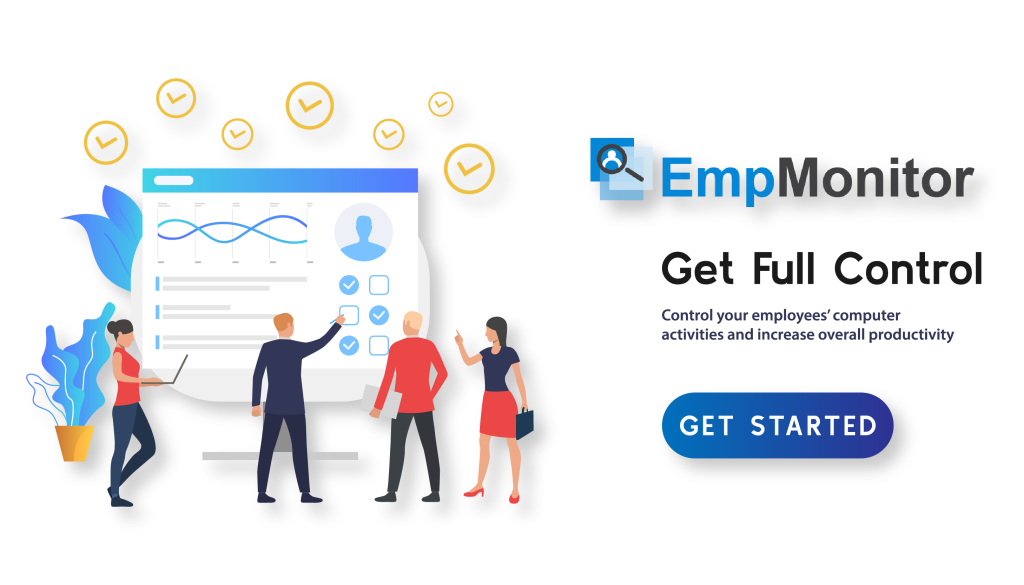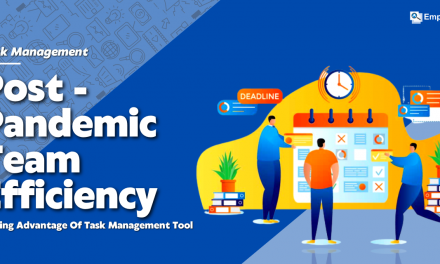We know the struggle of finding the right talent, getting them on board, and then watching them either thrive or, well, not quite fit in. It’s a process that can be both exhilarating and exasperating.
But how you onboard your new employees can make or break their experience in your company. You all have been there, right?
There comes a time when a promising recruit feels like he’s a square foot in a round hole. It’s painful for them, and it’s a headache for you. That’s where the magic of onboarding comes in, and not just any onboarding but the kind that can seriously upskill the employee experience.
So, if you’re ready to address that nagging pain point, stick with us.
In this blog, we are going through seven onboarding best practices that will transform your onboarding process, taking your new hires from uncertainty to excellence.
So, let’s get started!
Listen To The Blog Now!!
Why Is New Onboarding Important?
Effective onboarding is the cornerstone of a successful and productive workforce. It plays a pivotal role in helping new employees not only adapt to their new roles but also excel in them.
Here’s why it’s crucial:
1. Accelerated Adaptation:
New employees often face a steep learning curve when they join a company. They need to grasp the company culture, understand their roles and responsibilities, and navigate the intricacies of the organization. A well-structured onboarding process eases this transition, enabling them to acclimate faster and contribute to the team’s goals sooner.
2. Employee Engagement:
Engaged employees are more likely to stay with their company for longer. Onboarding best practices foster a sense of belonging, align new hires with the company’s mission, and provide them with the tools and resources to engage in their work effectively.
3. Productivity Boost:
Employees who feel confident in their roles and have the necessary skills are more likely to be productive from day one. An efficient onboarding process can equip them with the knowledge and skills to start contributing immediately.
4. Retention and Reduced Turnover:
A well-structured onboarding program can significantly reduce turnover rates. When employees have a positive onboarding experience, they’re more likely to stay with the company, saving recruitment and training costs.
5. Enhanced Company Culture:
Onboarding isn’t just about teaching job-related skills; it’s also about introducing employees to the company’s values, mission, and culture. This helps them align with the organization’s core principles and become cultural ambassadors.
To achieve these benefits, organizations can use advanced Employee Monitoring software like EmpMonitor in their onboarding processes.
EmpMonitor: Workforce Management Tools
EmpMonitor is an employee monitoring and workforce productivity engagement software designed to help organizations track and manage employee activities in a digital work environment.
It provides comprehensive insights into how employees use their computers and time during work hours, making it a valuable tool for businesses aiming to enhance productivity, security, and compliance.
It offers the following advantages:
1. Efficiency:
EmpMonitor automates many onboarding tasks, such as setting up accounts, working hours and productivity charts. This reduces the administrative burden on HR teams and enables them to focus on more strategic aspects of onboarding.
2. Monitoring and Analytics:
It allows real-time monitoring of employee activities and performance, giving HR and managers insights into how new hires adapt and progress in their roles. This data helps identify areas where additional support or training may be required.
3. Feedback Collection:
EmpMonitor includes features for gathering feedback from new employees, helping organizations continuously improve their onboarding processes.
4. Security and Compliance:
EmpMonitor ensures data security and compliance with privacy and regulatory requirements during the onboarding process.
Incorporating tools like EmpMonitor into your onboarding process not only streamlines the experience for new hires but also provides a valuable resource for HR and management to track and enhance employee development, ultimately leading to more successful and satisfied employees.
Now that we understand the importance of onboarding let’s explore the seven onboarding best practices that can transform the employee experience.
7 Onboarding Best Practices For Your Company
When it comes to welcoming new employees, effective onboarding can be the difference between a smooth, confident start and a shaky, uncertain beginning.
As an employer, you want your new hires to not just fit in but to excel in their roles, and that’s where these onboarding best practices come into play.
Get New Hires Involved Early
Getting new employees involved from day one is crucial for a successful onboarding process. It’s about more than just paperwork and introductions; it’s about making them feel like a valuable part of the team from the very start.
One effective approach is to assign them meaningful tasks and responsibilities right away. Even if these tasks are relatively small, they provide new hires with a sense of purpose and responsibility.
This early involvement is vital for building their confidence and helping them integrate seamlessly into the company’s workflow. It instils a feeling of ownership, making them more committed to their roles and responsibilities.
These practices are the epitome of onboarding best practices, creating a foundation for employee success.
Show Company Values Right Away
Company values are the moral compass that guides your organization’s culture and decisions. To help new hires feel connected to your company, it’s essential to introduce and emphasize these values from the outset of their journey.
This early introduction ensures that new employees not only understand these values but also embrace them. When employees align with your company’s values, they become more than just workers; they become cultural ambassadors.
Emphasizing your values from day one helps set clear expectations and encourages employees to contribute to a shared sense of purpose. These practices embody onboarding best practices that nurture a thriving work environment.
Help New Employees Make Friends
Friendships at the workplace can significantly impact employee satisfaction and collaboration. Encouraging social interactions among new hires is a key element of successful onboarding.
You can facilitate these interactions by organizing welcome lunches, team-building activities, or virtual meet-and-greet sessions. Building supportive relationships within the team can make the onboarding process smoother and more enjoyable.
These interactions not only help new employees feel more comfortable but also foster a sense of belonging. When employees have supportive colleagues, they are more likely to collaborate effectively and contribute positively to the organization.
Supportive colleagues can also act as mentors and guides, helping new hires navigate their roles and the company culture more efficiently.
Learn as You Work
In modern work environments, the ability to learn and adapt continuously is a crucial skill. Onboarding new employees isn’t about overwhelming them with information overload in their first few days on the job. Instead, it’s about promoting learning within the workflow, a quintessential aspect of onboarding best practices.
This approach involves providing just-in-time resources and onboarding training tips for new employees as they encounter new tasks or challenges. Learning as you work means acquiring skills and knowledge precisely when they are most relevant and applicable to your role.
The advantage of this approach is that it empowers employees to be proactive in seeking the information they need. This fosters a culture of continuous learning, where employees are encouraged to explore and develop their skills as they progress in their roles.
It also prevents the stress and frustration that can come with information overload and ensures a more focused and effective onboarding experience.
Don’t Overload with Information
Information overload can be counterproductive to the onboarding process. Providing new hires with essential information in manageable, bite-sized portions is a more effective approach, one that is at the heart of onboarding best practices.
Consider using multimedia resources such as videos, infographics, or interactive modules to make the learning process engaging and easier to digest.
Breaking down information into smaller, digestible portions not only enhances retention but also prevents new hires from feeling overwhelmed. Multimedia formats cater to different learning preferences, ensuring that everyone can engage with the material effectively.
This approach not only improves the onboarding experience but also sets the stage for ongoing, efficient learning throughout an employee’s career.
Check-In with New Hires Often
Frequent check-ins with new hires are invaluable during the onboarding process. These sessions provide a valuable opportunity for new employees to ask questions, seek guidance, and share their experiences and challenges.
Managers should schedule these check-ins regularly to ensure new hires are comfortable and progressing well in their roles.
Regular check-ins create a support system for new employees, helping them navigate the early stages of their employment. It also makes sure that any worries, queries, or issues they have are taken care of as soon as possible.
Moreover, these check-ins provide managers with a chance to provide positive feedback, boosting new hires’ confidence and motivation.
Ask New Hires for Feedback
Gathering feedback from new employees is a crucial part of continuous improvement within your onboarding process, a fundamental element of onboarding best practices.
It’s not just about providing information; it’s about receiving insights from the very people who are experiencing your onboarding process firsthand. By seeking input from new hires, you demonstrate a commitment to their development and well-being.
This fosters a positive company culture where employees feel valued and heard. Plus, the feedback from new hires gives you a lot of useful information that you can use to make sure your onboarding process is perfect for future employees.
It’s a powerful tool for continuous improvement, ensuring that your onboarding practices evolve and stay effective in meeting the needs and expectations of new employees.
Read More:
Top 12 Benefits Of Employee Monitoring Software
Successful On-Boarding Training Tips For New Employees
7 Reasons Why Your Company Needs Workforce Management Tool
Bonus!!
3 Best Practices for Onboarding Remote Employees
The rise of remote work has made onboarding remote employees a necessity. So, here are three onboarding best practices to ensure a smooth transition for remote hires:
Use Technology:
Remote onboarding relies heavily on technology. Use remote workforce management tools that provide a seamless virtual onboarding experience. These tools can help automate processes, offer digital training resources, and facilitate communication between remote employees and the team.
Virtual Orientation:
Conduct a virtual orientation session to introduce remote employees to the company’s culture, policies, and values. Use video conferencing tools for interactive sessions that engage and familiarize remote hires with the company.
Buddy System:
Assign a ‘buddy’ or mentor to remote employees. This individual can guide them through the onboarding process, answer questions, and provide a virtual support system.
Conclusion
Effective onboarding is a strategic investment in your workforce, and these seven onboarding best practices can significantly upskill the employee experience. Whether in an office or remote setting, the right onboarding practices set the stage for employee success, engagement, and retention.
By implementing these strategies, you can foster a positive workplace culture and empower your new hires to excel in their roles.
Remember, staff management tools like EmpMonitor can be invaluable assets in making onboarding a success, especially in the remote work environment. A well-structured onboarding process not only benefits new employees but also contributes to the overall success and growth of your organization.














